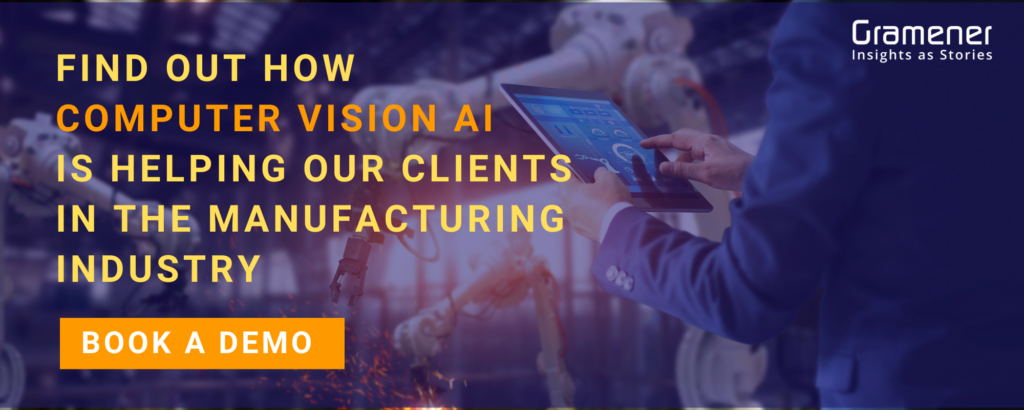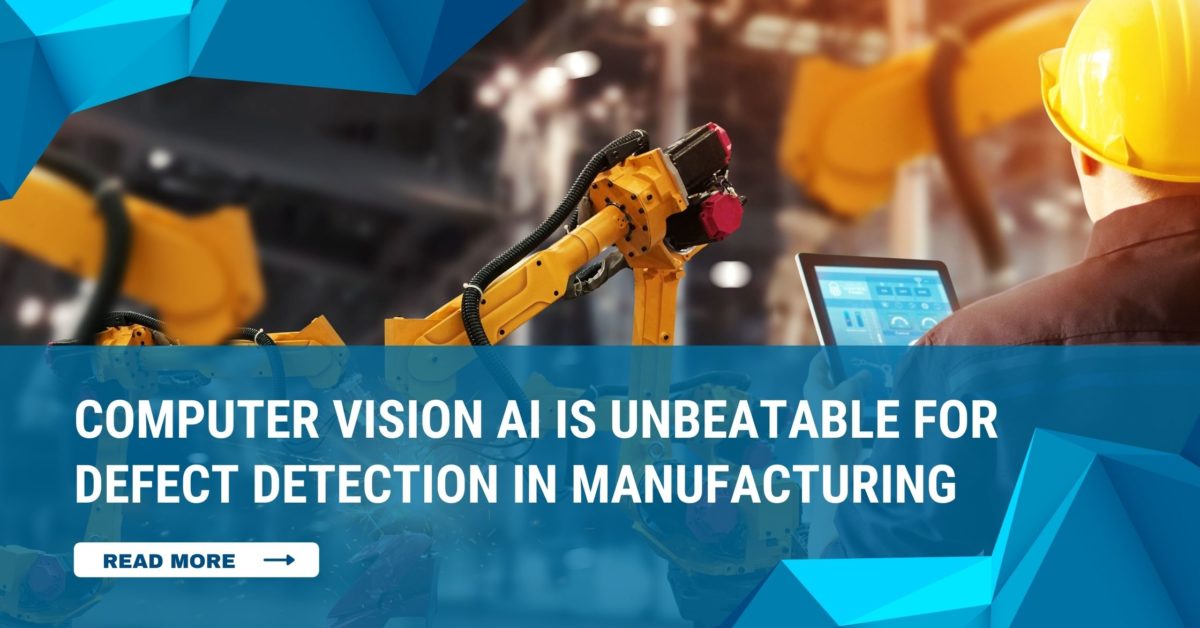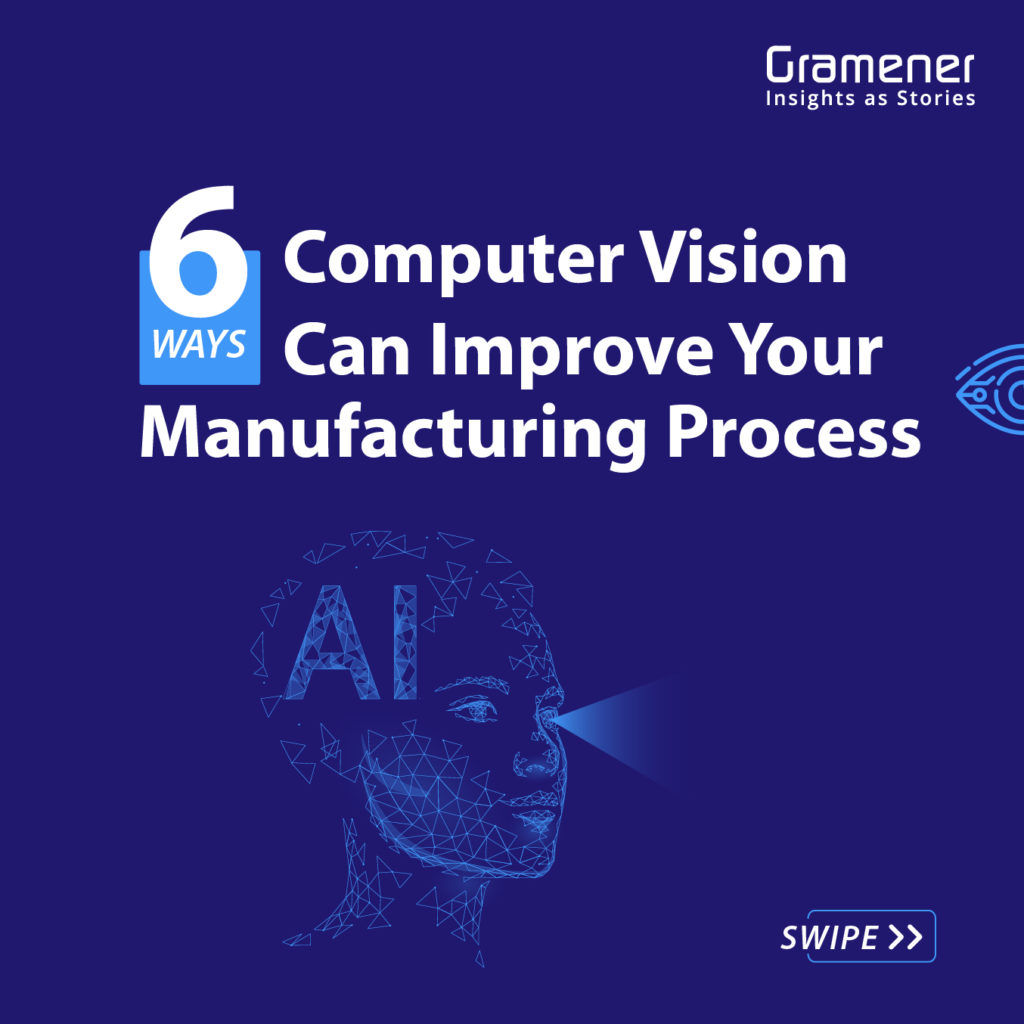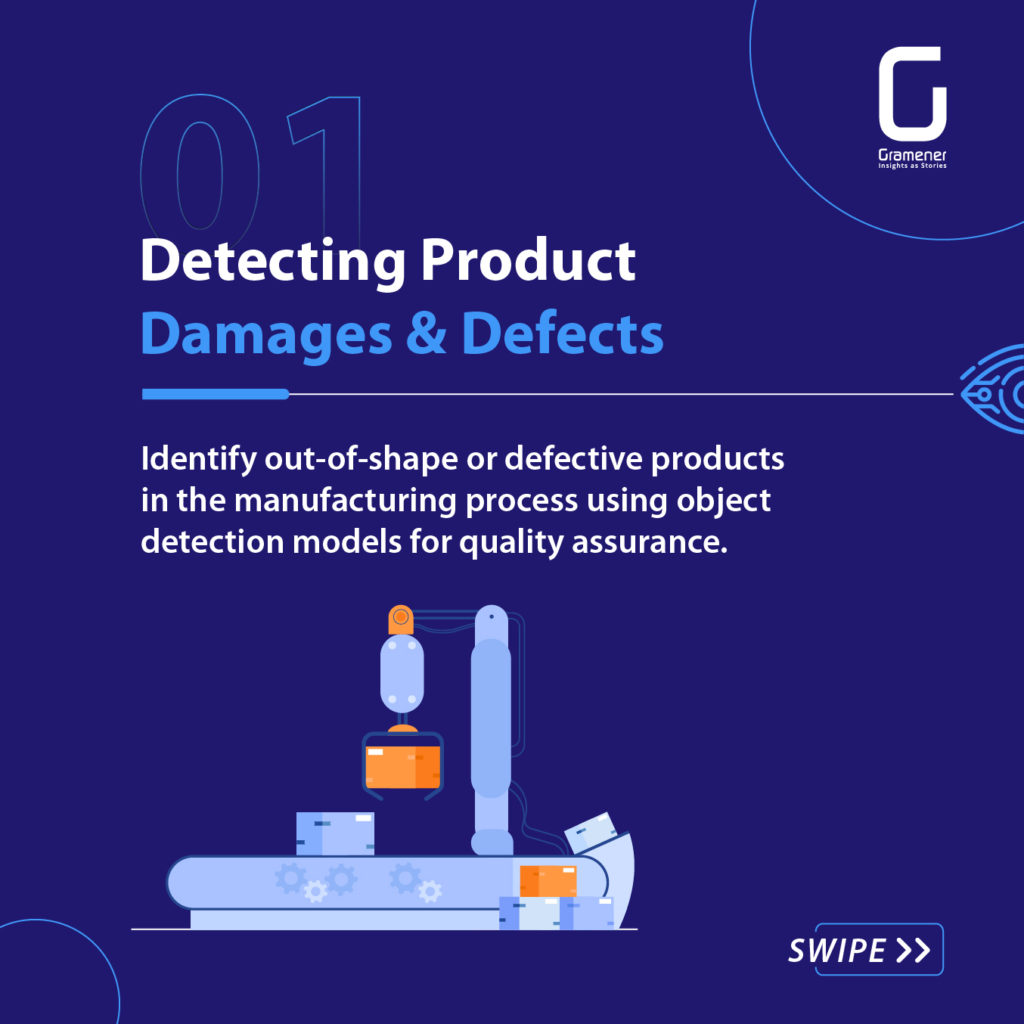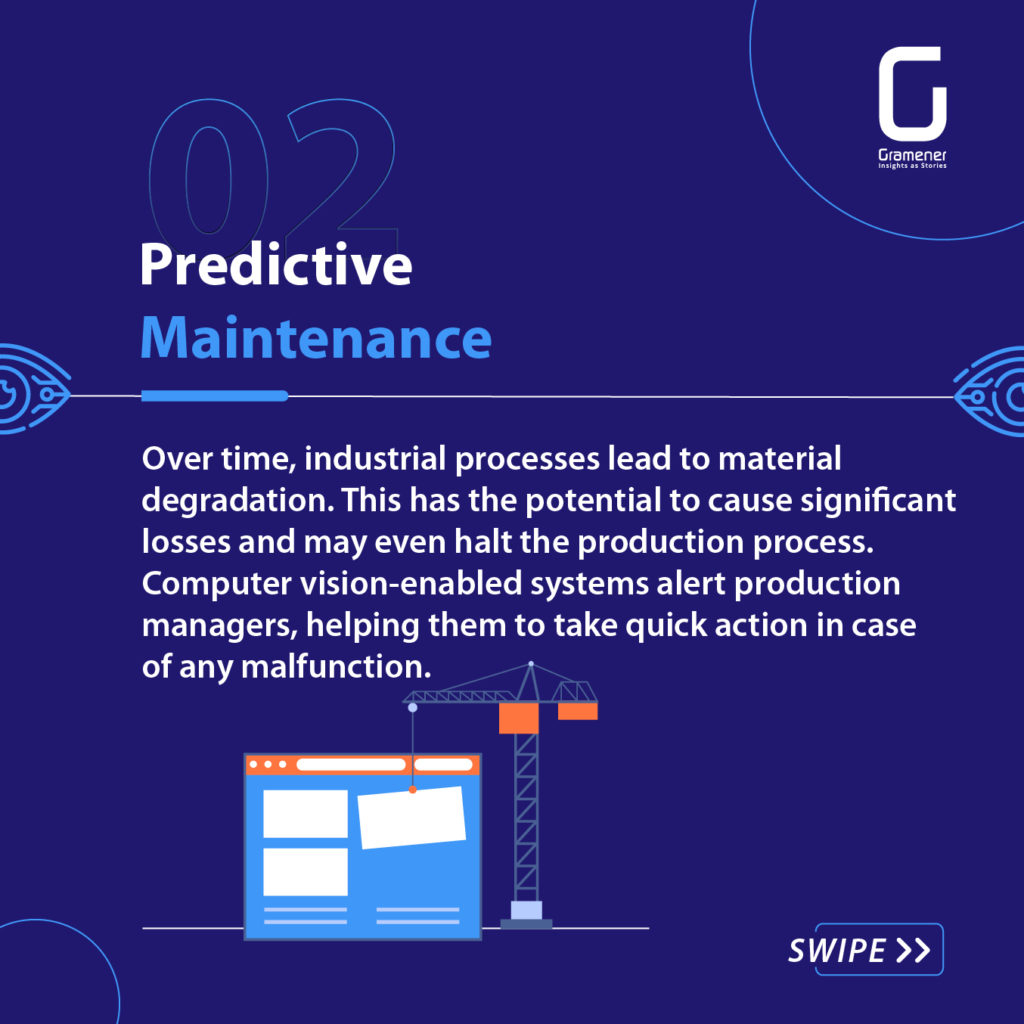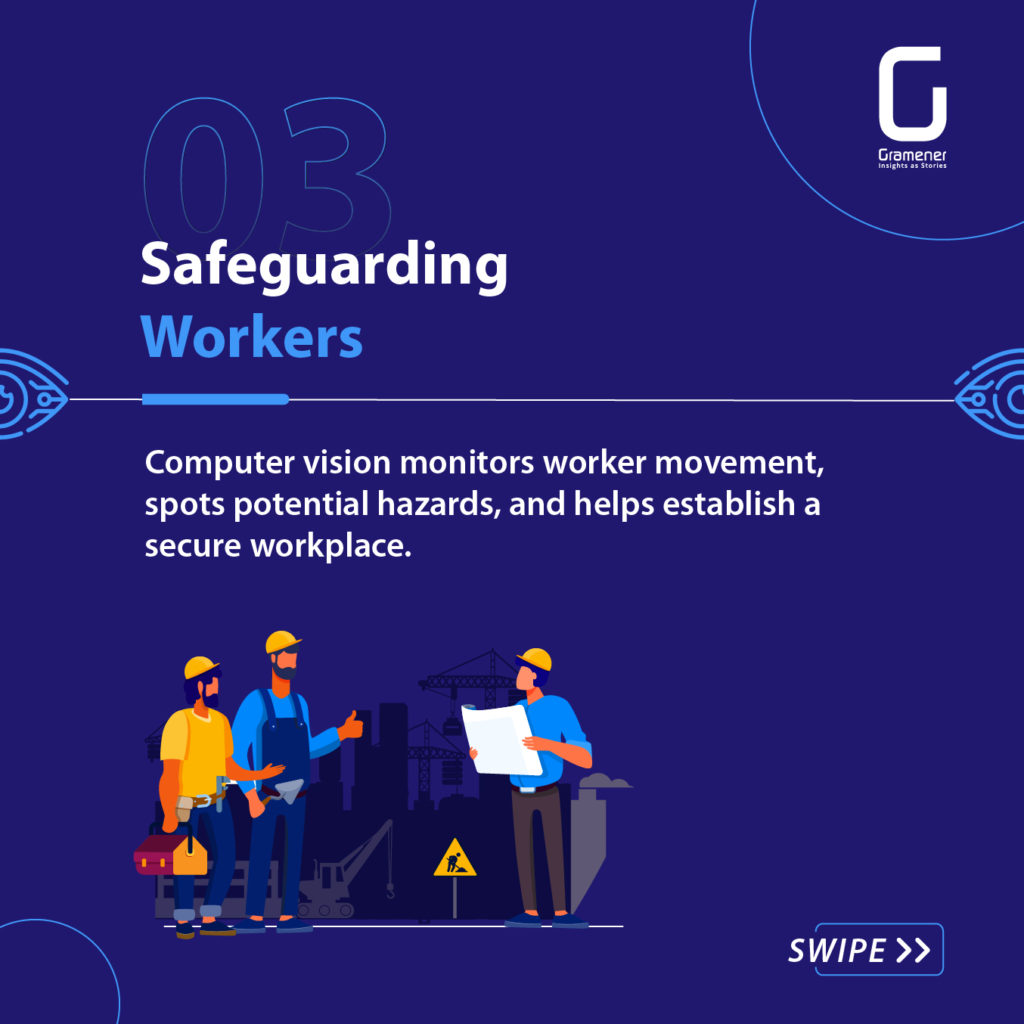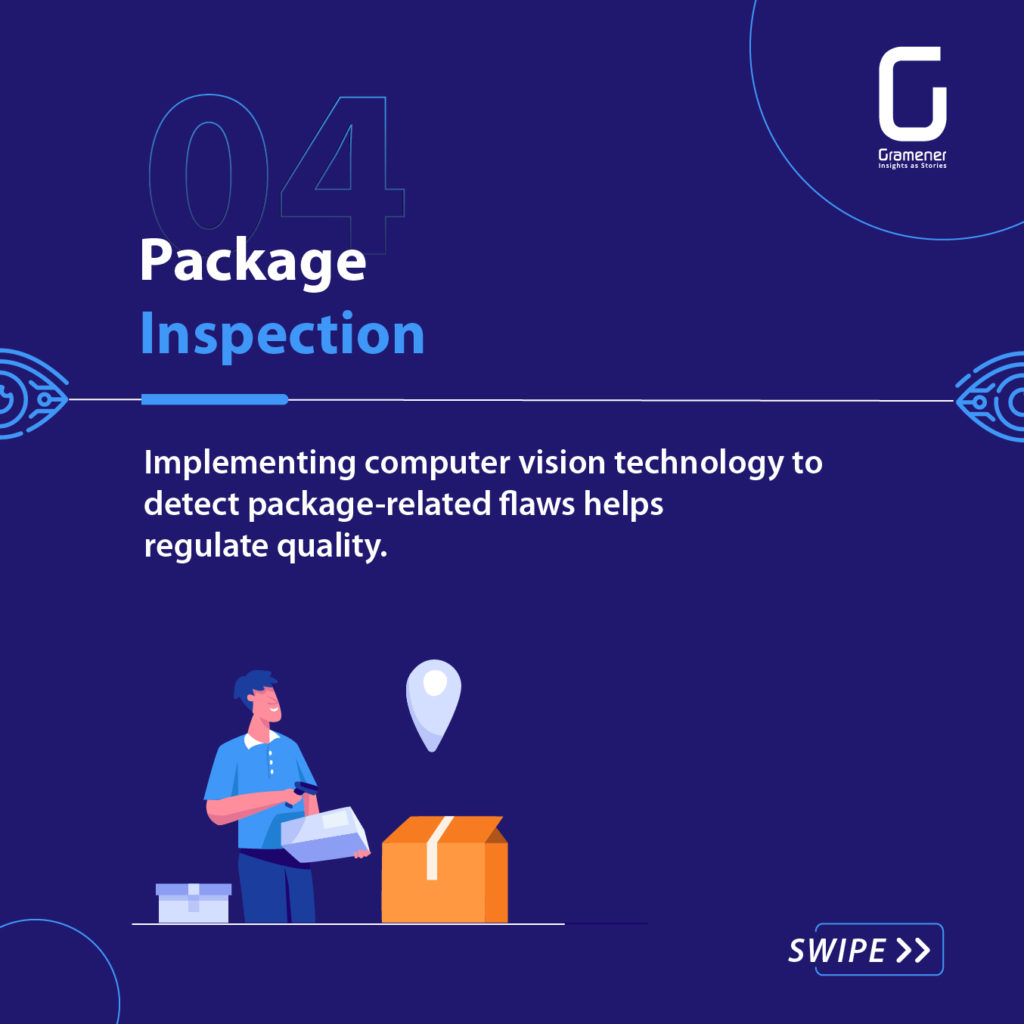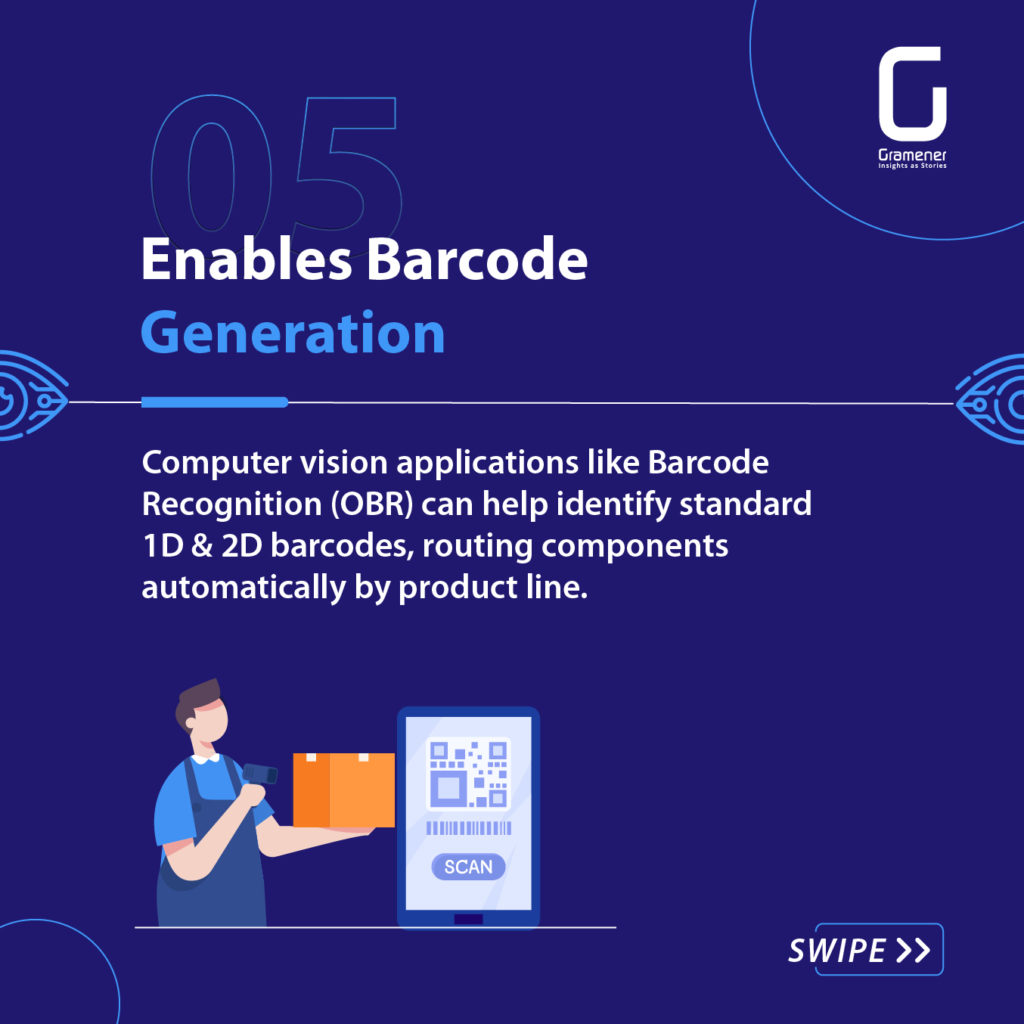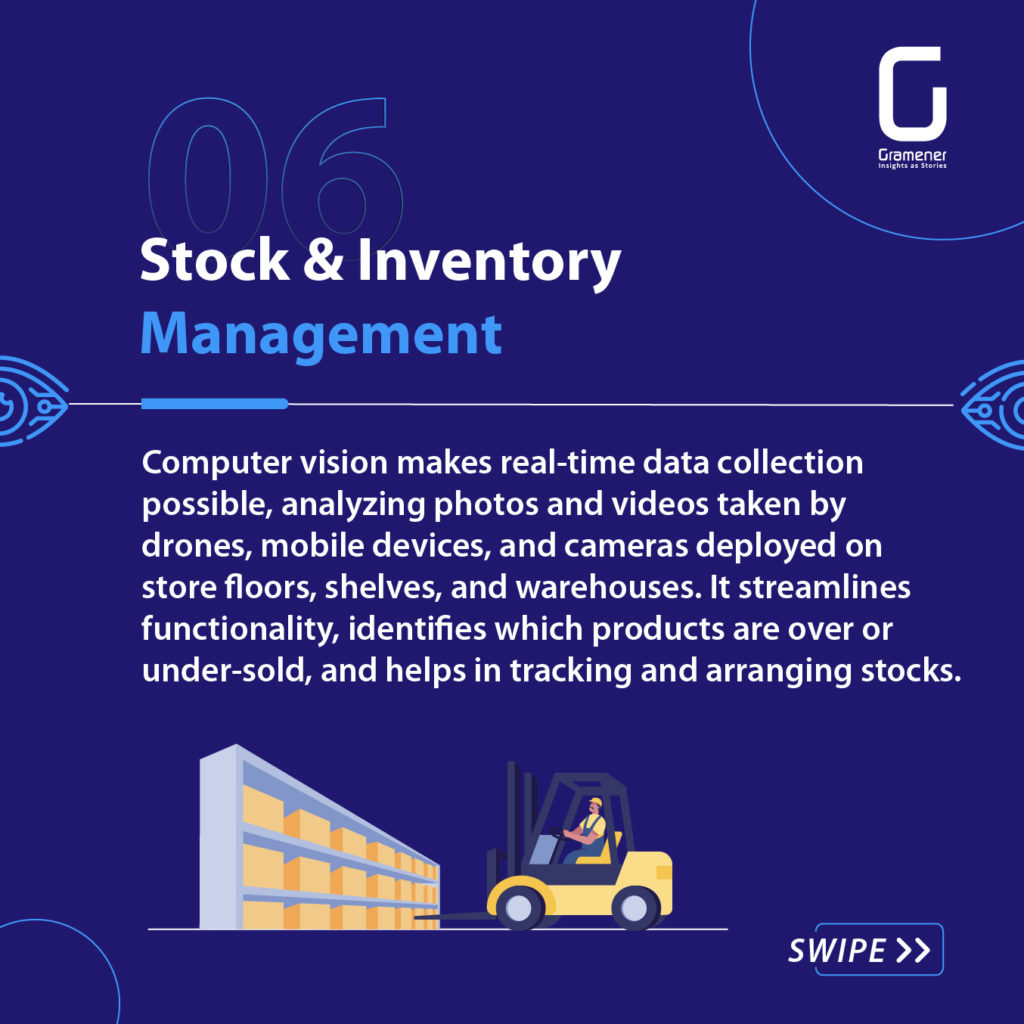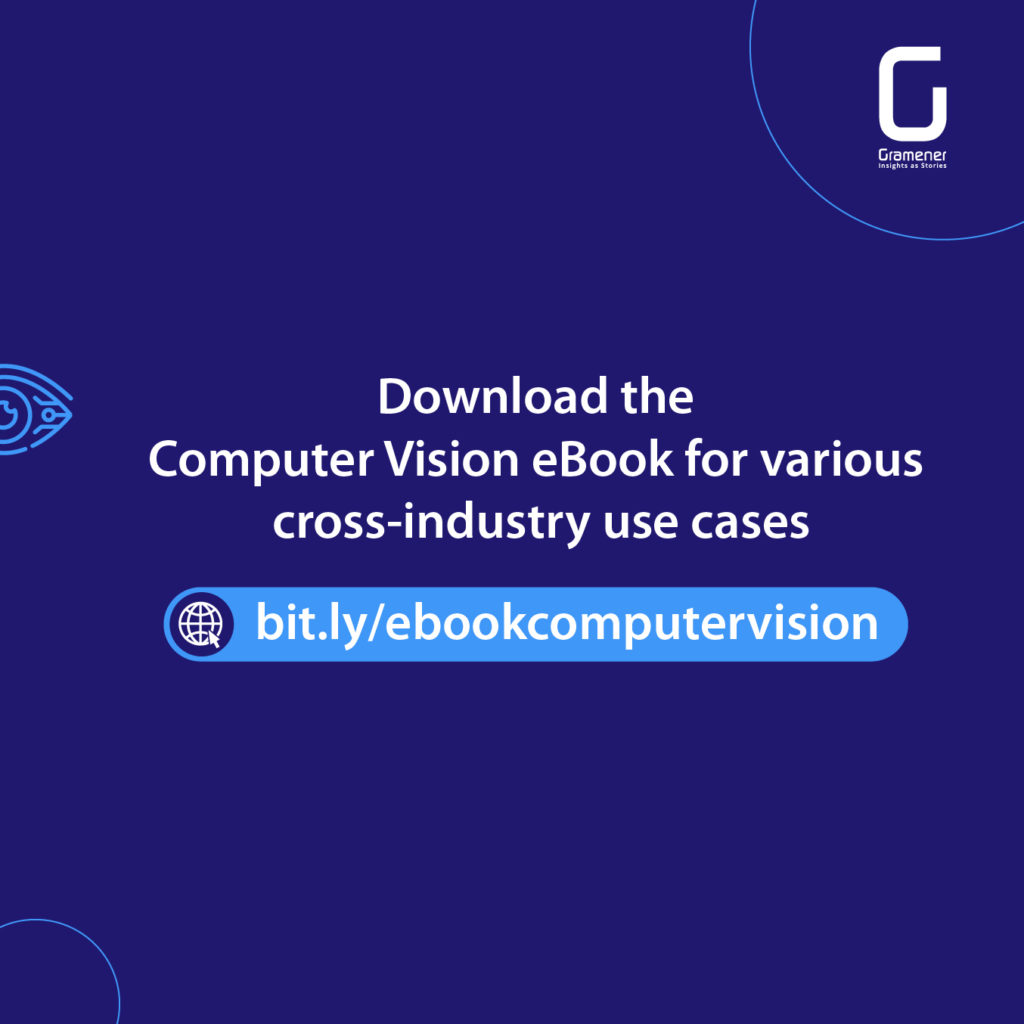Computer vision systems are used in various industries for defect detection purposes. In the manufacturing sector, quality control has always been crucial. To increase the quality of the output, manual methods were gradually replaced with mass manufacturing assembly lines. Furthermore, technological advancements are rapidly transforming traditional manufacturing lines.
However, quality remains an issue despite all the advancements over the years. Even minor variances in production processes are enough to trigger defects that are often irreversible.
This problem can be overcome using technologies like Computer Vision, a subset of artificial intelligence (AI). In this article, we will cover various computer vision examples, solutions, and use cases that are making the impossible possible.

Table of Contents
What is Computer Vision?
Processing visual data is ideal for various use cases and applications. Computer Vision helps computers gain essential insights by extracting information from images and videos. The system offers recommendations that help humans make better decisions. These include text reading, object classification, and much more.
Computer Vision is rapidly impacting many industries like healthcare, automotive, retail, and others. Its contribution to the manufacturing industry remains a vital focus area. For example, the system can analyze a database and identify all the images containing a car or an object of a particular color.
Can Computer Vision Predict Defects?
One of Gramener’s top clients, a car insurance firm, wanted to automate its damage assessment process to speed up claim settlements. The organization sought to visualize car damage from multiple angles and not depend solely on the physical visit of the insurance agent. Automating the process also saved time and money.
Gramener trained a Computer Vision model to classify live images from a camera through an Android app. The resulting application could estimate car damage with an inference time of only 2 seconds.
The model eliminated the need for human intervention and achieved a staggering accuracy rate of 97%.
Read our latest articles: Computer Vision in Healthcare & Computer Vision in Manufacturing
The Need for Visual AI Defect Detection in Manufacturing
The manufacturing industry can benefit immensely from Computer Vision. Here are a few reasons why Computer Vision in defect detection is necessary.
Defective Product Detection
Computer Vision in defect detection can outdo traditional flaw identification measures with reliable results. The system understands orientation, positioning, texture, and other details to identify anomalies. Businesses leveraging Computer Vision can get a modern defect detection model offering several benefits.
Manufacturing firms can deliver high-quality products at a much faster pace. Computer Vision in defect Detection models comes with high adaptability and scalability, enabling businesses to use them flexibly. For example, integrating Computer Vision at the initial stage of production helps sort defective components and prevent them from going into the manufacturing process.
Reduces Labor and Other Operational Costs
Manual processes often consume a lot of time, remain error-prone, and pose safety risks. The advent of Industry 4.0 has helped businesses automate operations that consume plenty of resources. Whether it is product development, testing, or deployment, automation helps in all these aspects.
Computer Vision in defect detection helps floor employees overcome tedious and monotonous activities. It leads to improved productivity. Visual AI defect detection image processing tools enable rapid inspection across the production lines. Qualitative evaluation leads to reduced product inadequacies for better customer satisfaction.
Reduces Cycle Time
Product inspection and report generation become seamless with Computer Vision. The technology behind the application comes with advanced processing speeds. There are also significant memory options that reduce storage hassles. The defect detection system offers reliability to help everyone remain assured of the output.
Computer Vision in defect detection can identify internal and external errors based on the input commands. The automated system adheres well to the industry norms. Customers can expect standard sizes, dimensions, and measurements of manufactured items. The products remain free from manufacturing errors.
Optimizes Material Inspection
Identifying poor-quality materials is vital to prevent manufacturing defects. However, it remains a time-consuming process. This leads to the wastage of resources. It is also prone to false positives.
Businesses end up wasting consumables, labor, production capacities, and revenue. If the finished product with a defect reaches the customer, it can have even more adverse consequences. Besides complaints and revenue loss, it also leads to irreparable reputation loss. AI inspection detects faulty components and helps segregate them before production starts.
How Visual AI Defect Detection Works
Modern visual AI defect detection systems in manufacturing depend on cloud-based servers. They are trained in visual data and machine learning algorithms. Computer Vision in defect detection systems identifies cracks and dents, missing components, surfaces with poor painting, and much more. When these systems get trained on millions of images of specific types, they can identify related patterns within a dataset with great accuracy.
Production managers can install high-quality camera systems on the assembly lines of factories. These cameras remain connected to the visual AI system. Managers get the chance to identify defective components and separate them before they lead to errors. These systems can also identify minor flaws that a human eye would generally miss. They offer better reliability and efficiency compared to manual resources.
7 Ways Computer Vision has Revolutionized Manufacturing
Here are the various applications and use cases of Computer Vision in Defect Detection.
Detecting Damages and Defects in Vehicles with Computer Vision
Vehicle damage detection systems have ML algorithms and APIs that use Computer Vision. Defect Detection algorithms leverage deep learning models to inspect a vehicle’s body and identify damages. They can audit a car and its parts to create repair estimates based on damages.
APIs evolve to provide customized needs and offer an integrated solution for claims management. Businesses can also create a vehicle damage recognition system based on their data. They can deploy it as a SaaS or on-premises product.
Predictive Maintenance with Computer Vision
Maintenance is a critical activity for businesses that assemble physical components. Failure of such services can hurt a company’s reputation and lead to losses. Computer Vision in defect detection helps overcome this problem with the help of machine learning algorithms. However, predictive analytics in manufacturing enables the capability to predict the likelihood of failures to improve product quality and optimize cost.
IoT devices track the data from individual components of machines with the help of sensors. These sensors can identify signals and flag alerts to production managers to take corrective measures in case of anomalies. It helps prevent accidents and damage to the machinery.
Ensuring the Safety and Security of Workers
Computer Vision offers deep insights from external surroundings like a production unit. It helps maintain a safe working environment for everyone. The system works on millions of images gathered from areas with and without activities.
One of the recent examples is the safety norms mandated due to the Covid-19 pandemic. Computer Vision can detect people’s compliance with wearing masks and PPE kits and maintain social distancing. Factory managers can monitor the data and ensure that everyone follows safe working protocols at all times.
Identifying Defects in Packaging
Maintaining product quality involves a high degree of efficiency in detecting packaging defects. Computer Vision in defect detection identifies damaged packages based on the different image attributes. The system combines deep learning and neural network models to check faulty products.
Computer Vision can rapidly detect defects with reliable results for advanced production efficiencies. The processed visual data gets sent to the convolutional neural network to create specific models. These models then get used to detect products with defects through automated measures.
Maintaining Packaging Standards
One of the vital aspects of reliable packaging standards is the number of items placed in packages and containers. Manual execution of this task remains time-consuming and error-prone. An incorrect number of items in a box leads to customer complaints and a loss of business reputation. Retail and pharma are two specific industries that face this problem a lot.
Computer Vision accurately counts the items to confirm stringent packaging standards. The system also inspects the furnished packages to check for damage. It helps businesses eliminate the risks of faulty packages reaching customers. All these inspections happen before products leave the factory,
Enables Barcode Generation and Analysis
Barcode verification is crucial to ensure the product has accurate details. But inconsistencies with product barcodes are typical. It makes such products less reliable for customers. Computer Vision systems scan barcodes seamlessly to check for faults. The system will also flag faulty barcodes and send them for removal. Doing the task manually consumes a lot of time, which Computer Vision helps overcome.
Stock and Inventory Management with Computer Vision
Computer Vision helps in comprehensive inventory management in several ways. It tracks stock items and maintains their status in the warehouse. The system will also alert facility managers in case of mismanagement. One of the benefits is overcoming the manual counting of stock items, which remains time-consuming.
Businesses with extensive warehouses may even find it cumbersome to locate stocks. Computer Vision and barcode data can make it easier for managers to discover the goods.
Conclusion
Computer Vision in defect detection brings a range of benefits to manufacturing businesses. The system helps to rapidly detect flaws and remove faulty components before they enter production. Manufacturers can replace manual processes with the unmatched automation capabilities of Computer Vision. It helps them avoid production errors and loss of reputation and revenue.
Gramener offers comprehensive defect detection solutions with the help of Computer Vision. These solutions deliver results that help you improve your reputation as a trusted business. Our solutions are hyper-focused to suit the needs of various domains such as manufacturing, insurance, etc.
Contact us for custom-built low-code data and AI solutions for your business challenges and check out computer vision solutions built for our clients, including Fortune 500 companies. Book a free demo right now.
